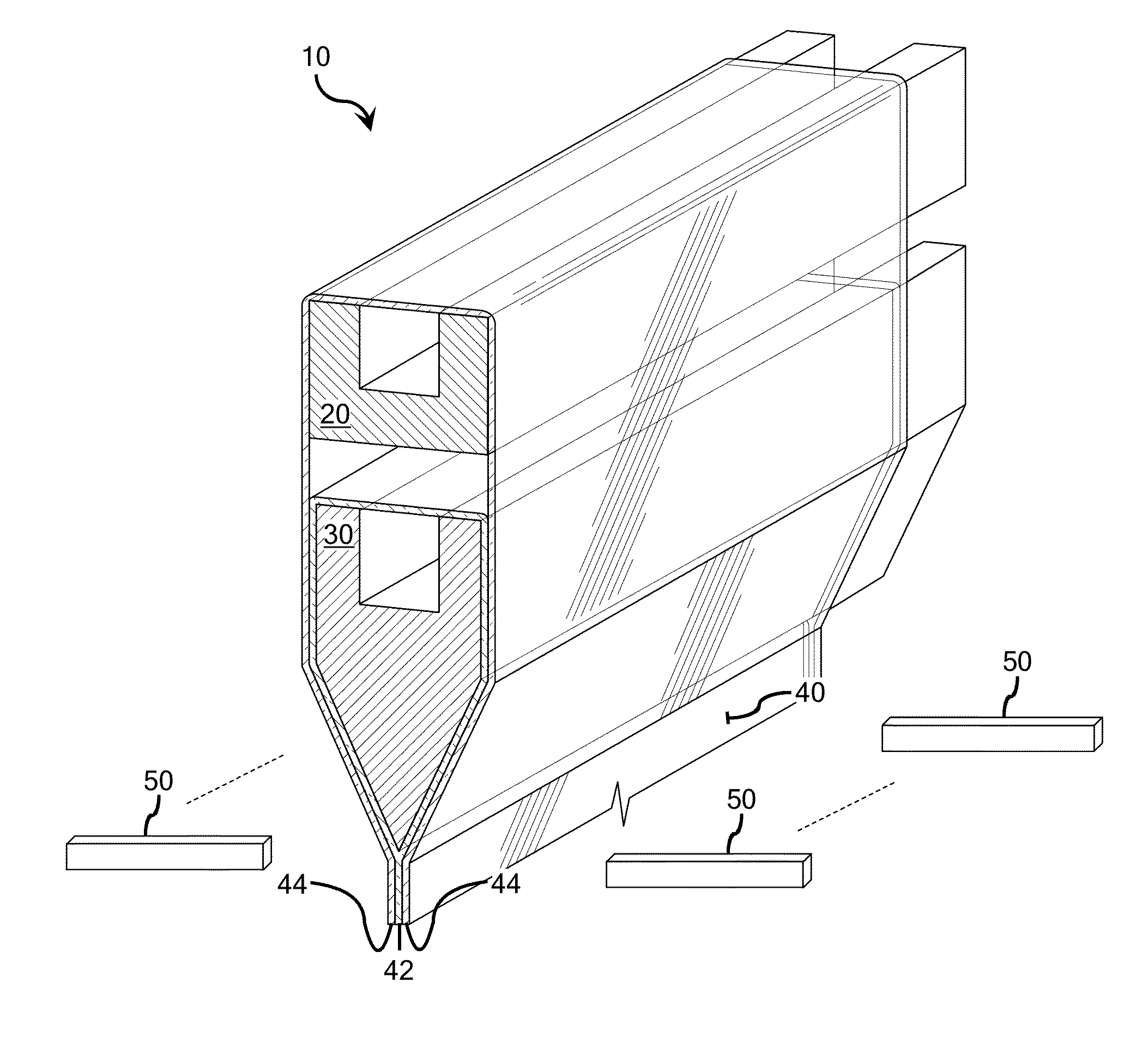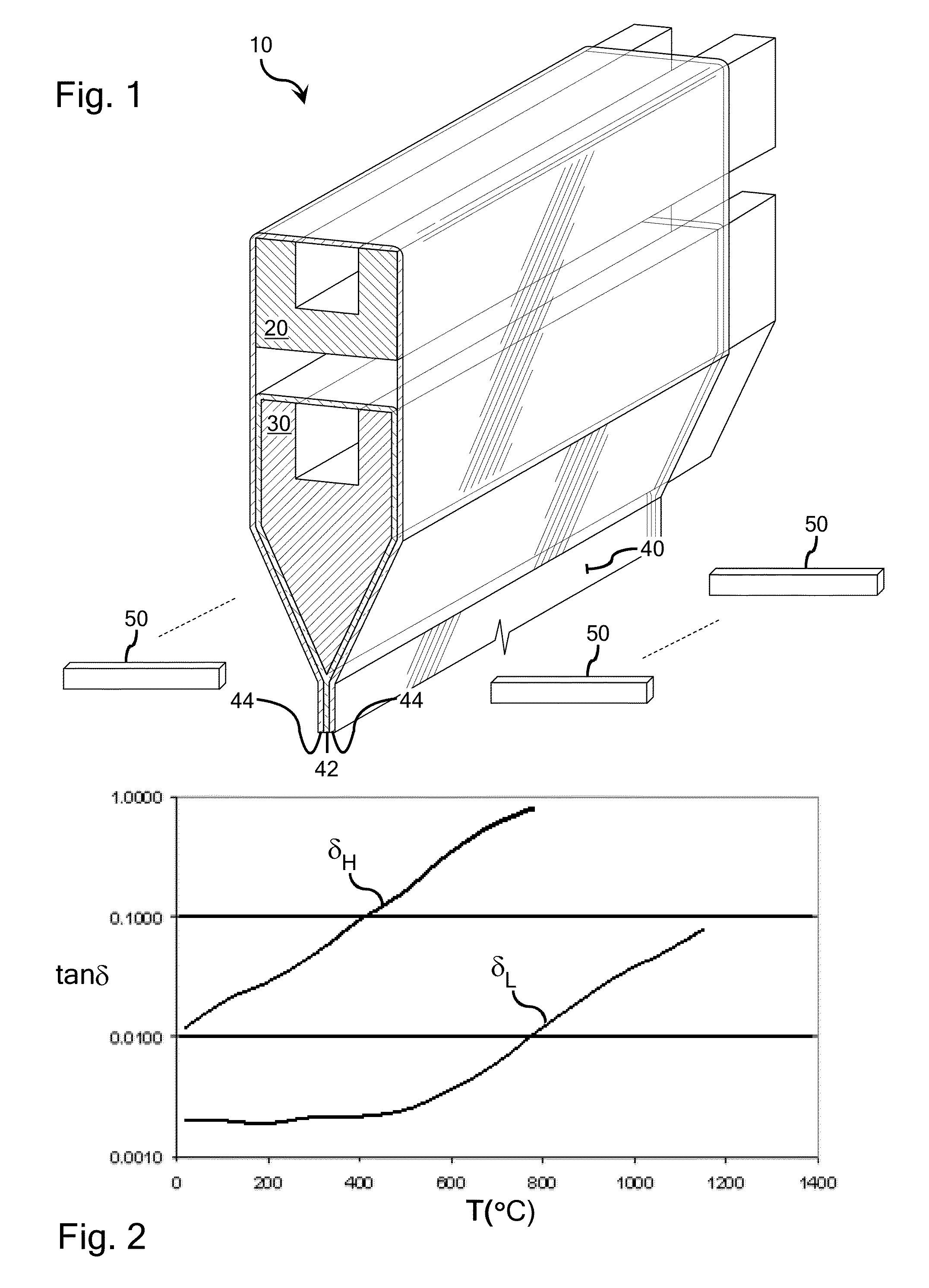Microwave-based glass laminate fabrication
a technology of glass laminates and microwaves, applied in glass tempering apparatuses, electric/magnetic/electromagnetic heating, glass rolling apparatuses, etc., can solve the problems of non-selective approaches, glass layers suitable for laminate fusion can exhibit significant differences in their respective dielectric losses, and achieve the effect of reducing center tension, minimizing thickness variations, and improving edge finishing of glass laminates
- Summary
- Abstract
- Description
- Claims
- Application Information
AI Technical Summary
Benefits of technology
Problems solved by technology
Method used
Image
Examples
Embodiment Construction
[0016]Methods of fabricating glass laminates in accordance with the teachings of the present disclosure can be conveniently illustrated with reference to the double isopipe fusion process illustrated schematically in FIG. 1, the details of which can be readily gleaned from available teachings in the art including, for example, Corning Incorporated U.S. Pat. Nos. 4,214,886, 7,207,193, 7,414,001, 7,430,880, 7,681,414, 7,685,840, 7,818,980, international publication WO 2004094321 A2, and PG Pub No. US 2009-0217705 A1.
[0017]As is illustrated in FIG. 1, in a laminate fusion process 10, molten outer layer glass overflows from an upper isopipe 20 and merges with the core glass at the weir level of a bottom isopipe 30. The two sides merge and a three-layer flat laminated sheet 40 comprising respective core and outer layers 42, 44 forms at the root of the core isopipe. The laminate sheet 40 can pass through several thermal zones for sheet shape and stress management and is then cut at the bo...
PUM
| Property | Measurement | Unit |
|---|---|---|
| viscosity | aaaaa | aaaaa |
| viscosity | aaaaa | aaaaa |
| temperature | aaaaa | aaaaa |
Abstract
Description
Claims
Application Information
 Login to View More
Login to View More - R&D
- Intellectual Property
- Life Sciences
- Materials
- Tech Scout
- Unparalleled Data Quality
- Higher Quality Content
- 60% Fewer Hallucinations
Browse by: Latest US Patents, China's latest patents, Technical Efficacy Thesaurus, Application Domain, Technology Topic, Popular Technical Reports.
© 2025 PatSnap. All rights reserved.Legal|Privacy policy|Modern Slavery Act Transparency Statement|Sitemap|About US| Contact US: help@patsnap.com



